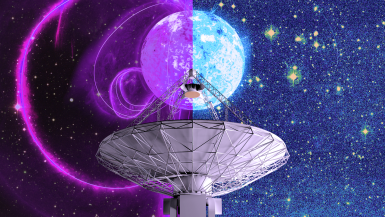
Support your mental health and wellbeing
December 12, 2024
As the year wraps up, it can be a time of additional pressure, amplifying stress and personal challenges, so it is important to prioritise our mental health and well-being.

What you can do to support the ATNF Pulsar Catalogue
December 11, 2024
As a user and an author, you can help us update the catalogue as quickly as possible by following our guidelines for publishing pulsar parameters.

Apply now for 2025APR semester observing time
December 11, 2024
We’re pleased to announce that proposals for ATNF observing time are now open for the 2025APR semester, Grab your chance to use one of the world’s most advanced radio astronomy facilities.

The October ATNF News out now
October 28, 2024
Catch up on our latest developments, upgrades, events, and research headlines in our October edition. Hear about a mysterious long-period transient; get updates on CryoPAF and CRACO commissioning; and discover what accessibility means for websites.

Congratulations to Matthew Bailes, winner of the 2024 Prime Minister’s Prize for Science
October 10, 2024
Professor Matthew Bailes, from OzGrav and Swinburne University, has been awarded the 2024 Prime Minister’s Prize for Science for his role in the discovery of fast radio bursts and leadership in the field of radio astronomy.

First fringes between SKA-Low stations
September 20, 2024
The SKA-Low has begun to work as an interferometer, with first fringes showing successful correlation between two stations.

ATNF releases our vision for the next decade
September 6, 2024
Australia is currently in the midst of developing a plan for the next decade of astronomy, reviewing infrastructure, instrumentation, education and more across the spectrum.

We’re hiring! New ATNF leadership opportunities
August 6, 2024
Join our world-leading radio astronomy facility, part of Australia’s national science agency.

Australian researchers give weight to NASA neutron star study
July 16, 2024
Nearly 30 years of data from CSIRO’s Parkes telescope and NASA’s NICER have revealed a nearby neutron star’s mass, helping scientists predict gravitational waves from neutron star collision – the key to understanding how these extreme objects collapse into black holes.

Applications are now open for 2024/25 Space and Astronomy Vacation Studentships
July 4, 2024
Apply now for our Undergraduate Vacation Studentship

ATNF astronomer wins Louise Webster Prize 2024
June 25, 2024
Dr Andrew Zic has received the Astronomical Society of Australia’s Louise Webster Prize for 2024.

Call for proposals for the 2024OCT semester
June 6, 2024
Proposals for observing time are now invited for the 2024OCT semester.
